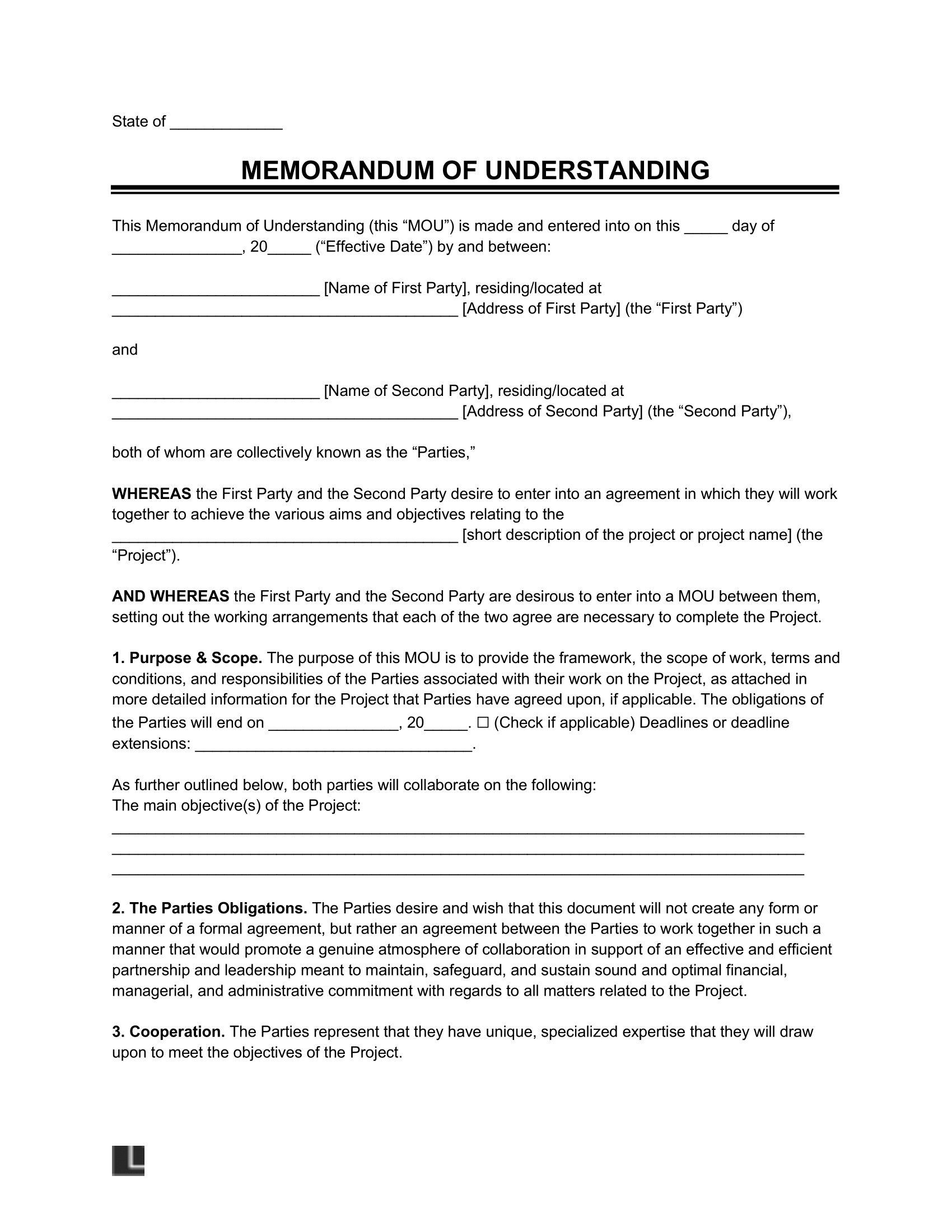Partnership Term Sheets

Leveraging Agreements to Build Successful Collaborations
A partnership term sheet is a non-binding agreement that outlines the key terms and conditions of a business partnership. While not legally binding, it helps to ensure that both parties are on the same page regarding their expectations and goals.
These documents can also be named a Memorandum of Understanding or a Letter of Intent or a Letter of Agreement.
Why use a term sheet in a business partnership?
If these are not legally binding, why take the time to create one of these during a partnership?
- To focus the partnership: Term sheets can be helpful to distill what both parties want from a partnership, and can save time by not exploring projects which to not fit with current strategic goals.
- To set expectations and avoid misunderstandings: A term sheet can help to avoid misunderstandings down the road by clearly outlining the roles and responsibilities of each party, resource commitments, high-level goals, as well as the financial terms of the partnership.
- To accelerate the partnership: Negotiating a term sheet can be a relatively quick and inexpensive process compared to negotiating a full-fledged legal agreement. This is because term sheets are typically non-binding, which means that they are not legally enforceable.
- To align internal stakeholders: Term sheets can often include resource commitments from different parts of your business. Creating and signing a term sheet can be a forcing function to have the right discussions with internal teams, force discussions are the relative priority of an initiative.
- To generate excitement: Creating a concise outline for a program with a partner, and capturing in this format, can be a way to generate excitement internally.
- To discuss challenging topics: The business terms including in these agreements may include resource commitments, financial commitments, details on exclusivity, event sponsorships, etc. This can force you to work through these early in the partnership, and save you time in the long run.
Differences in Term sheets vs. legal agreements
A term sheet is different from a legal agreement in several ways:
- Binding vs. non-binding: A legal agreement is a binding contract that is enforceable by law. A term sheet, on the other hand, is not legally enforceable. This means that if a dispute arises between the parties, a court will not uphold the terms of a term sheet.
- Level of detail: A legal agreement is a detailed document that spells out all of the terms and conditions of the partnership. A term sheet, on the other hand, is a more concise document that only outlines the key terms of the partnership.
- Finality: A legal agreement is the final document that governs the partnership. A term sheet, on the other hand, is a starting point that may be amended or replaced by a legal agreement.
Common terms in product partnership term sheets
Some of the most common terms included in product partnership term sheets include:
- Goals: What are both parties trying to achieve by working together?
- Resourcing: What resource commitments are being made together? Could include named people or roles
- Intellectual property: The ownership and licensing of intellectual property created by the initiative
- Event Sponsorships: Will you sponsor each others' events, or co-sponsor an industry event?
- Integrations: What product or platform integrations will you collaborate on? Will any net new functionality be added to roadmaps for this partnership? When will these be designed, specified, built and tested?
- Co-marketing: How to you plan to co-market together? Will there be any PR or Press included?
- Governance: How will these teams stay engaged? Who are the executive sponsors on both sides?
- Escalation process: If there is an issue / delay, how will this be surfaced and discussed?
Best practices in leveraging these term sheets
To get the most out of a term sheet, it is important to follow some best practices:
- Keep it simple: The more simple the term sheet, the higher the probability of success.
- Get legal advice: Both parties should consult with an attorney before signing a term sheet. An attorney can help to ensure that the term sheet is fair and protects the interests of both parties.
- Be clear and specific: The terms of the term sheet should be clear and specific. This will help to avoid misunderstandings down the road.
- Negotiate in good faith: Both parties should negotiate in good faith. This means that they should be open to compromise and should work towards a mutually beneficial agreement.
- Be realistic: The terms of the term sheet should be realistic and achievable. It is important to set expectations that can be met.
Conclusion
A term sheet is an important tool for any technology partnership. By following these best practices, you can ensure that your term sheet is a win-win for both parties.
“A term sheet is insurance against future misunderstandings. It's worth the time and effort to get one.” ― Mark Cuban
If you enjoyed this piece, please share it. Thanks. 🙏
Related Reading








